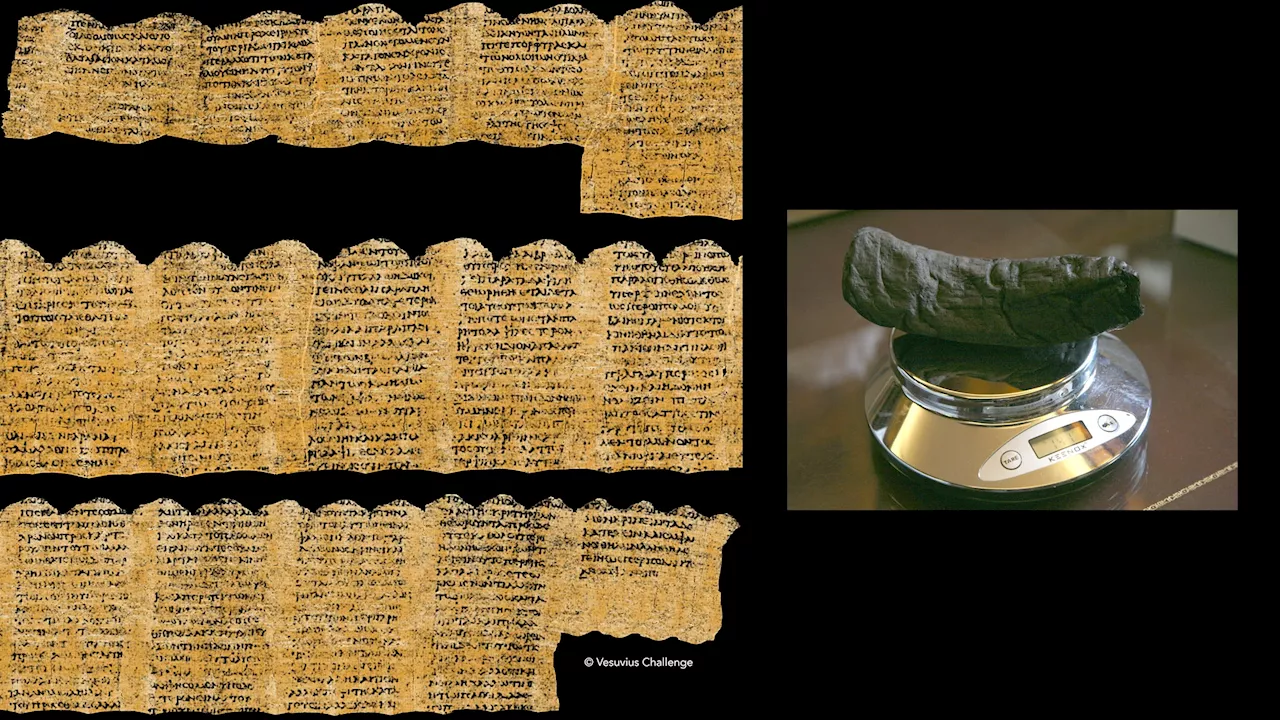Andrew Paul is Popular Science‘s staff writer covering tech news. Previously, he was a regular contributor to The A.V. Club and Input, and has had recent work featured by Rolling Stone, Fangoria, GQ, Slate, NBC, as well as McSweeney’s Internet Tendency. He lives outside Indianapolis.
Damaged ancient papyrus scrolls dating back to the 1st century CE are finally being deciphered by the Vesuvius Challenge contest winners using computer vision and AI machine learning programs. The scrolls were carbonized during the eruption of Italy’s Mount Vesuvius in 79 CE and have been all-but-inaccessible using normal restoration methods, as they have been reduced to a fragile, charred log.
Fast forward to 2019, and around 270 “Villa of the Papyri” scrolls still remained inaccessible—a lingering mystery prompting a team at the University of Kentucky to 3D scan the archive and launch the Vesuvius Challenge in 2023. After releasing open-source software alongside thousands of 3D X-ray scans made from three papyrus fragments and two scrolls, challenge sponsors offered over $1 million in various prizes to help develop new, high-tech methods for accessing the unknown contents.
